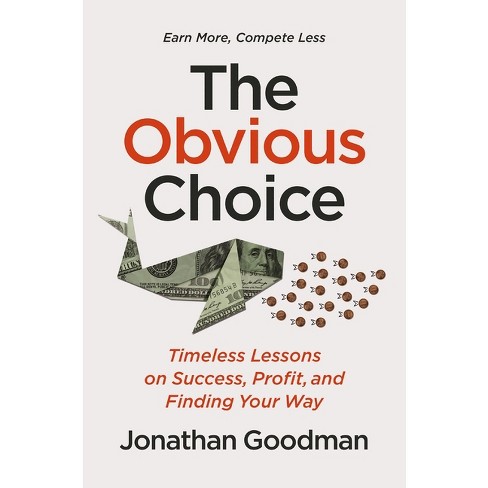Is The Real Safe Bet Always The Obvious Choice?

Table of Contents
The Illusion of Safety in Obvious Choices
Our brains are wired to seek comfort and avoid uncertainty. This often leads us to perceive familiar options as inherently safer, even if a closer examination reveals otherwise. This perception is often fueled by powerful cognitive biases.
Cognitive Biases and the Appeal of the Familiar
Cognitive biases significantly influence our perception of risk and reward. Two prominent biases at play are confirmation bias and anchoring bias.
-
Confirmation Bias: We tend to seek out information that confirms our existing beliefs. If we believe a particular investment or career path is a "safe bet," we're more likely to focus on information supporting that belief, ignoring potential downsides.
-
Anchoring Bias: We over-rely on the first piece of information we receive. For example, the initial purchase price of a stock can heavily influence our perception of its value, even if the market conditions have changed.
-
Availability Heuristic: We overestimate the likelihood of events that are easily recalled, often due to recent media coverage. A recent market crash, for instance, might make us overly cautious about all investments, even those historically stable.
Consider these examples: investing solely in well-established, blue-chip stocks because they seem safer, neglecting potentially higher-return options in emerging markets; or choosing a popular, overcrowded vacation destination instead of exploring a lesser-known, more unique, and potentially more rewarding location. These decisions, while seemingly risk-averse, might actually limit potential gains.
Uncovering Hidden Risks in Seemingly Safe Bets
Even choices considered "safe bets" can harbor unexpected risks. The illusion of security can blind us to potential downsides.
Market Volatility and Unexpected Events
Even seemingly secure investments, such as government bonds or blue-chip stocks, are susceptible to market volatility and unpredictable events. The 2008 financial crisis serves as a stark reminder that even the most established institutions and investments can be significantly impacted by unforeseen circumstances.
-
Diversification is crucial: Even a "safe" portfolio benefits from diversification across various asset classes to mitigate risk.
-
Risk tolerance is key: Understanding your personal risk tolerance is paramount before committing to any investment strategy.
-
Regular portfolio review: Market conditions change, so regular review and rebalancing are essential to adapt to these fluctuations.
The Opportunity Cost of Missed Potential
Focusing solely on "safe bets" often means missing out on potentially significant gains. This is the concept of opportunity cost – the potential benefits forfeited by choosing one option over another.
-
Evaluate the upside: Don't dismiss less obvious choices without thoroughly evaluating their potential upside.
-
Understand the risks: Research and understand the risks involved in alternative strategies before dismissing them.
-
Long-term goals: Align your risk tolerance and investment strategy with your long-term financial goals.
Strategic Risk Assessment for Smarter Decision-Making
Making informed decisions requires a strategic approach to risk assessment, tailored to your individual circumstances.
Defining Your Risk Tolerance
Understanding your personal risk tolerance is crucial before making any major financial decision or investment.
-
Consider your circumstances: Factors like age, financial situation, and investment goals heavily influence your risk tolerance.
-
Seek professional advice: Consulting a financial advisor provides personalized guidance based on your unique needs.
-
Utilize online tools: Numerous online risk tolerance questionnaires can help you better understand your risk profile.
Diversification and Prudent Risk Management
A well-diversified portfolio is the cornerstone of prudent risk management.
-
Don't put all your eggs in one basket: Spread your investments across different asset classes to reduce overall portfolio risk.
-
Diversify strategies: Consider various investment strategies to further mitigate risk and potentially enhance returns.
-
Monitor and adjust: Regular monitoring and adjustments to your portfolio ensure it remains aligned with your goals and risk tolerance.
Conclusion: Beyond Obvious Choices—A Balanced Approach to "Safe Bets"
In conclusion, while the appeal of "safe bets" is undeniable, it's crucial to recognize that obvious choices aren't always the safest. A balanced approach requires careful consideration of both risk and reward. Understanding your personal risk tolerance, diversifying your investments, and regularly reviewing your portfolio are vital for making informed decisions. Rethink your safe bets; evaluate your risk tolerance and explore less obvious opportunities. By adopting a more nuanced approach to risk management, you can achieve better outcomes and potentially unlock greater opportunities beyond the obvious choices.

Featured Posts
-
 2024 25 Nhl Season Major Storylines To Watch In The Second Half
May 09, 2025
2024 25 Nhl Season Major Storylines To Watch In The Second Half
May 09, 2025 -
 Elizabeth Arden Skincare Walmart Prices And Deals
May 09, 2025
Elizabeth Arden Skincare Walmart Prices And Deals
May 09, 2025 -
 Tragedi Putra Heights 10 Adn Pas Selangor Turut Salurkan Bantuan
May 09, 2025
Tragedi Putra Heights 10 Adn Pas Selangor Turut Salurkan Bantuan
May 09, 2025 -
 Palantir Stock Analysis Time To Buy Sell Or Hold
May 09, 2025
Palantir Stock Analysis Time To Buy Sell Or Hold
May 09, 2025 -
 Nyt Strands Thursday February 20 Complete Answers For Puzzle 354
May 09, 2025
Nyt Strands Thursday February 20 Complete Answers For Puzzle 354
May 09, 2025
